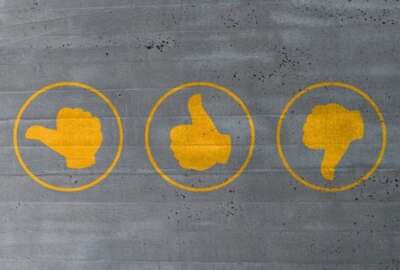Innovation From OPM’s Basement
Part of \"The Need for the Next Generation\" special report, the Office of Personnel Management is creating an innovation lab in its basement to test different...
By Jolie Lee
Federal News Radio
This story is part of Federal News Radio’s special report, The Need for the Next Generation.

Agencies’ recruiting, onboarding and management styles so far have been ad hoc. It will be up to the Office of Personnel Management to drive government-wide change.
That change may come out of the “cool team,” headed up 27-year-old Stanford graduate Matt Collier. The working group of five agencies was charged with figuring out how to make federal government appealing to young people.
One of Collier’s projects is to start re-imagining what a federal workplace might look and feel like in the future.
The front lobby of OPM is slick – covered in glass, marble and turnstiles for swiping security badges. But it’s two levels below – in the sub-basement — where Collier wants to build an innovation lab.
The sub-basement will house experiments with different work styles and settings. The results could be a prototype for a new kind of office and, in turn, a new kind of work culture for the federal government.
In December, an OPM spokesman said construction on the lab was set to begin in January and will be completed in the spring. The spokesman said in an email on Jan. 10 that the project is still in the “development stage moving towards construction – still on track.” Right now the space is a storage room full of boxes of equipment for the above-ground offices.
The sub-basement is almost completely soundless. Exposed pipes run the length of the windowless halls. Part of his reason for choosing this space was giving people the experience of getting down there, Collier said. Even the basement one level above was too much like a normal office, he said.
“We didn’t want the traditional space with cubes,” Collier said.
Instead of cubicles, there will be workstations. People will have a space to work, but it won’t be their space alone. Work is collaborative, meetings spontaneous. The idea of work is no longer a physical place but a resource.
Details about how the lab will look and work are still being sketched out, but Collier said the lab will make work “not only cool and fun, but also productive and effective.”
“We’re doing something so different it’s unexpected,” Collier said.
Read more from the special report “The Need for the Next Generation“
Introduction: The need for the next generation Innovation From OPM’s Basement Agency Tip 1: Get Out the Message Agency Tip 2: Provide Career Development Agency Tip 3: Manage With a ‘Personal Touch’ Agency Tip 4: Make New Hires Feel Welcome POLL: What’s the biggest challenge to recruiting and retaining young employees?
Copyright © 2025 Federal News Network. All rights reserved. This website is not intended for users located within the European Economic Area.





